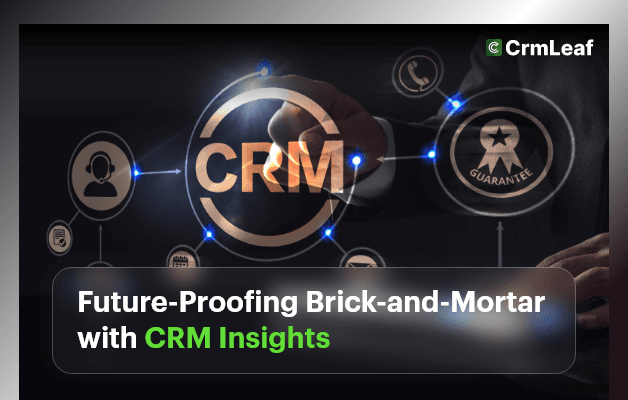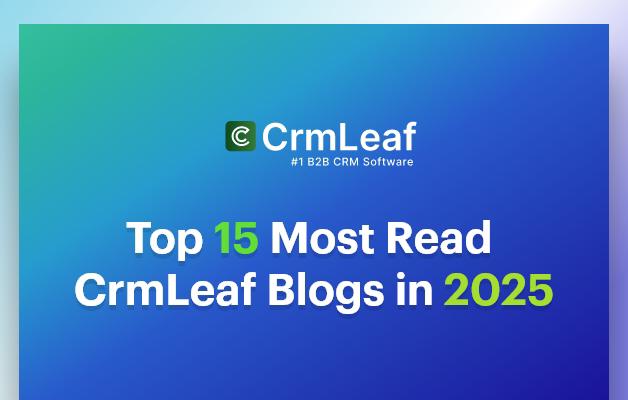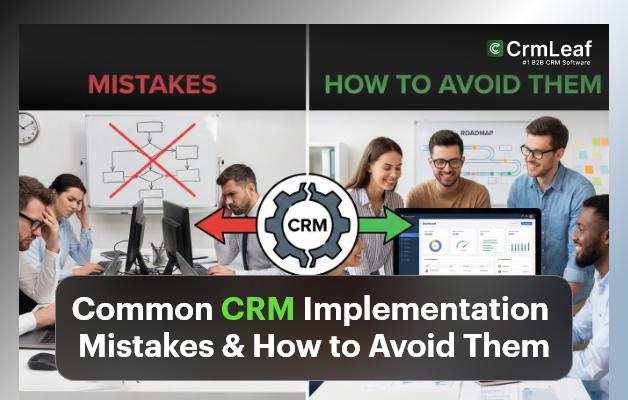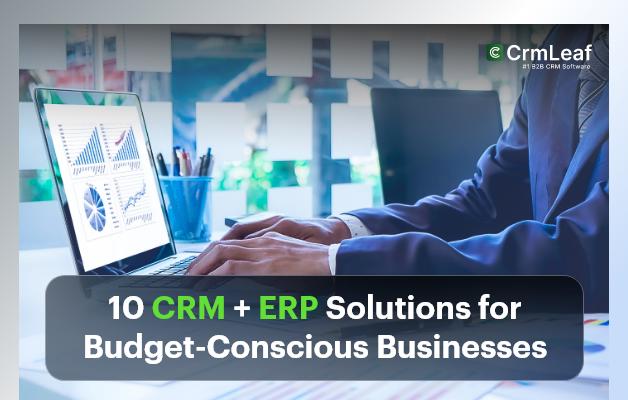Think retail is going all digital? Think again. Despite the rise of eCommerce, 85% of global retail sales still happen in physical stores (source). But survival isn’t guaranteed. Shifting consumer behaviors, rising costs, and fragmented operations put traditional stores at risk. To stay competitive, brick-and-mortar businesses need digital intelligence — the kind that only CRM systems can deliver. And not just any CRM. You need connected CRM insights for brick-and-mortar success.
In this blog, you’ll learn how CRM + ERP tools help retail, hospitality, and service-based businesses adapt faster, operate smarter, and serve better. We’ll break down the risks, show you what to do, and share how CRMLeaf makes the transition seamless.
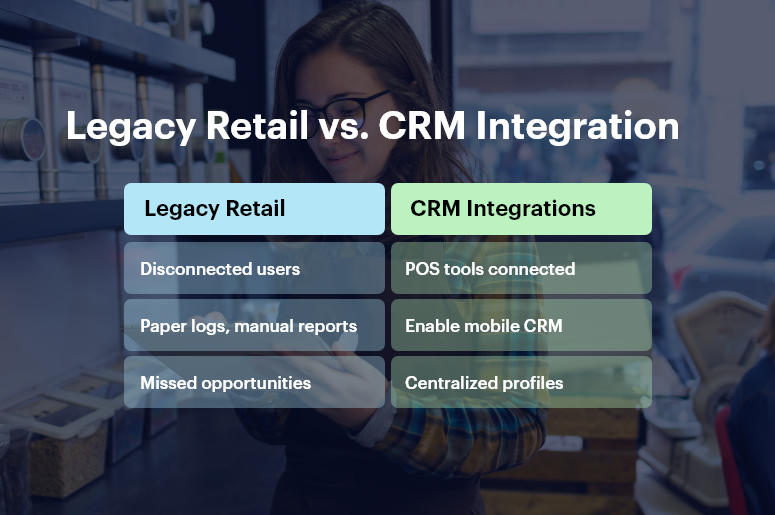
Why CRM Insights for Brick-and-Mortar Matter More Than Ever
Digital transformation isn’t just for tech companies. Retailers, local service providers, restaurants, clinics, and franchise owners are now expected to:
- Personalize every customer experience
- Track inventory, orders, and service in real-time
- Operate efficiently with smaller teams
But doing all this with disconnected tools, manual spreadsheets, or siloed teams simply doesn’t work.
Here’s why CRM insights for brick-and-mortar are mission-critical:
1. Shoppers Demand Personalization
Customers expect tailored experiences — from product recommendations to loyalty rewards. A CRM system centralizes data across POS, online, and mobile channels to build a unified customer view.
2. Inventory & Operations Must Be Agile
Supply chains are volatile. Stockouts and overstocks hurt profit. CRM + ERP helps monitor inventory across stores and warehouses, allowing real-time demand forecasting and procurement tracking.
3. Employee Productivity Impacts CX
Sales associates, front-desk staff, and service agents need fast access to customer preferences, previous purchases, and service history. CRM systems eliminate guesswork and improve in-store service quality.
4. Disconnected Tools Slow Growth
When your POS, marketing platform, and inventory software don’t talk, decisions suffer. CRM insights consolidate everything — from footfall data to sales metrics — on one dashboard.
Brick-and-mortar brands need more than foot traffic. They need foresight. That’s where CRM insights for brick-and-mortar drive real value.
Best Practices to Future-Proof with CRM + ERP
Here’s how to put CRM insights to work and modernize your physical business with confidence.
1. Centralize Customer Data Across Channels
Break silos by integrating sales, service, and marketing data in one place.
- Create a unified customer profile that tracks preferences, visits, purchases, complaints, and feedback in one dashboard.
- Use segmentation to personalize offers based on buying habits, location, and frequency — boosting conversion rates.
- Enable in-store staff with mobile CRM tools so they can access real-time insights and offer better service instantly.
2. Streamline Inventory, Order, and Supply Chain Tracking
Move beyond reactive stock handling. Predict, plan, and restock smartly.
- Set reorder thresholds with real-time stock visibility across stores and backrooms — reducing stockouts and waste.
- Track supplier performance, order delays, and procurement costs within one ERP dashboard — saving time and money.
- Sync online and offline channels to prevent double-selling and ensure consistent stock accuracy.
3. Leverage Footfall and Sales Data to Optimize Store Layouts
Data isn’t just for websites. Physical stores can optimize too.
- Track in-store visit patterns, average dwell time, and popular product sections using CRM-linked analytics.
- A/B test promotions, store layouts, and signage based on conversion metrics captured in the CRM.
- Align staffing levels with footfall trends to ensure better service during peak hours without overspending during slow times.
4. Personalize Promotions and Loyalty Programs
Offer the right deal to the right customer at the right time.
- Set up automated, behavior-triggered email or SMS offers based on in-store actions (like cart abandonment or seasonal purchases).
- Reward loyalty points and send birthday/anniversary coupons directly from the CRM.
- Track promo performance per store and segment to optimize ROI.
5. Integrate Staff Scheduling and HR into the CRM + ERP System
A productive team starts with smart staffing.
- Build staff schedules based on traffic patterns and peak sales windows. Avoid overstaffing and under-staffing issues.
- Track employee KPIs like conversion rates, upsell success, and service feedback using CRM dashboards.
- Automate onboarding, attendance, and payroll integration for operational efficiency.
6. Use Predictive Analytics to Stay Ahead
Make decisions based on trends, not guesswork.
- Forecast demand, sales trends, and foot traffic using historical CRM data combined with ERP analytics.
- Identify customer churn risks and intervene early with personalized campaigns.
- Optimize product placement, pricing, and promotions based on real-time CRM insights.
CRMLeaf’s AI-driven reports give real-time recommendations that improve both in-store and backend performance.
Real-World Impact
For example, a regional clothing store chain, used CRMLeaf’s CRM insights for brick-and-mortar to increase customer retention by 35% in six months.
Here’s how:
- They centralized customer data from five locations into one CRM dashboard.
- Automated loyalty campaigns drove repeat visits and higher basket values.
- Inventory sync across stores cut out-of-stock issues by 50%.
- In-store associates used tablets with CRMLeaf to upsell based on purchase history.
Result: Faster checkouts, happier customers, and a 22% increase in quarterly revenue.
Key Takeaways
- Brick-and-mortar isn’t dying—it’s evolving.
- CRM insights for brick-and-mortar help unify data, personalize customer service, and optimize operations.
- CRM + ERP platforms like CRMLeaf give SMBs the tools to compete with larger chains by making smarter, faster decisions.
The future of retail, hospitality, and service businesses will belong to those who blend physical experiences with digital intelligence.

